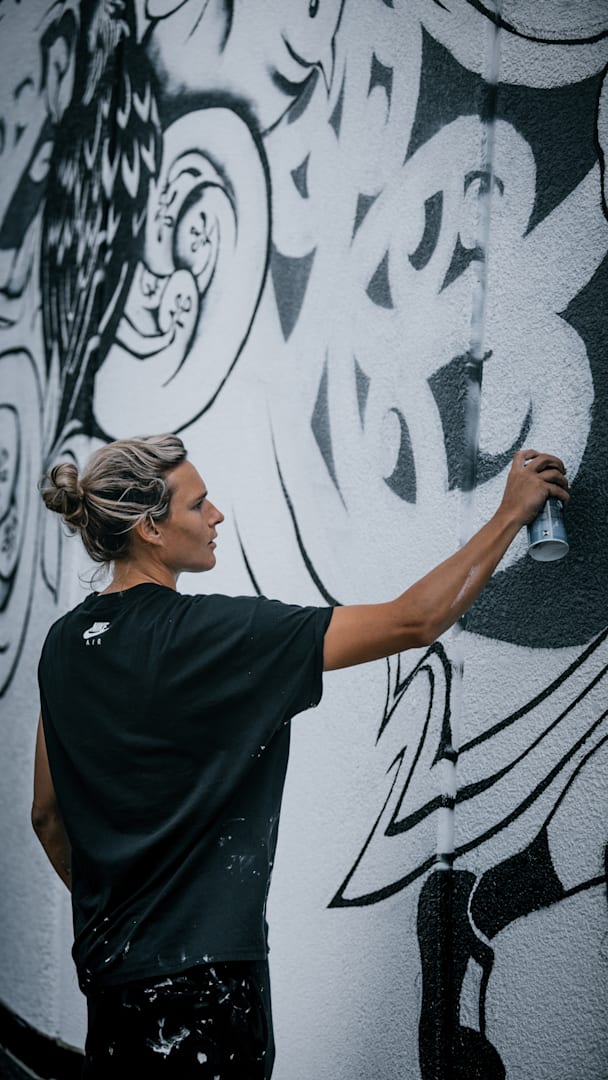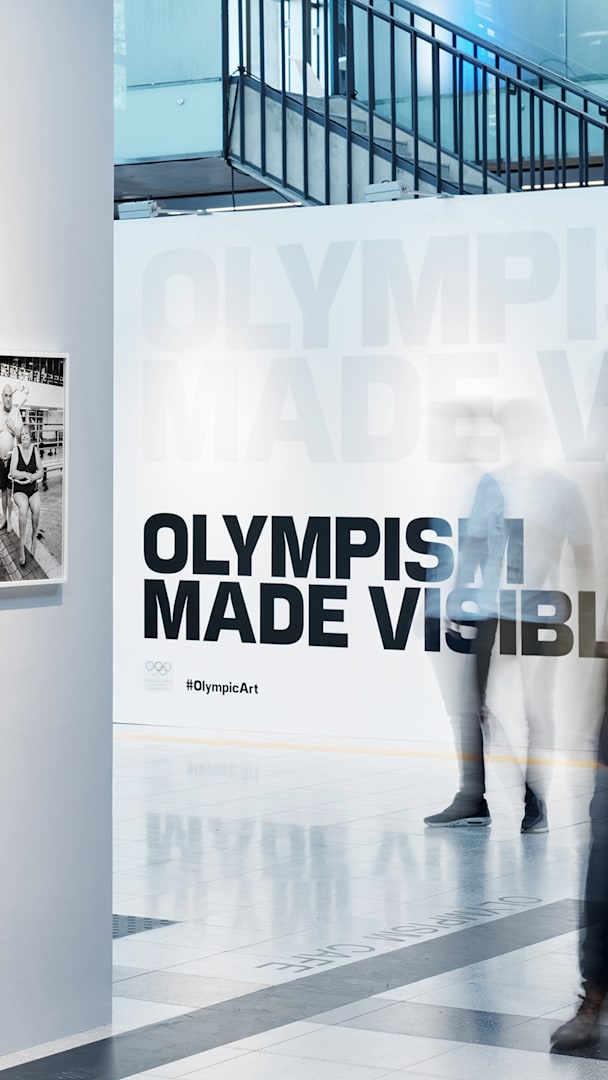Engaging Olympian Artists ahead of Paris 2024
How the Olympic Museum is engaging Olympian Artists ahead of Paris 2024
At the 141st Session of the International Olympic Committee (IOC) in Mumbai, India, Angelita Teo, IOC Director of Culture and Heritage, highlighted some of the Olympic Museum’s successes and future plans for the Olympian Artists programme. The initiative, now in its fifth year, promotes the creative voices of Olympians and Paralympians and provides them with opportunities to produce and present new artworks during and between editions of the Olympic Games.
Paris 2024 Programme
During her presentation, Teo outlined plans for the newly evolved Olympian Artists programme in the months leading up to Olympic Games Paris 2024.
For the first time, “three Olympians and one Paralympian will be ‘in residence’ for a week at different community social centres across the Paris metropolitan area,” said Teo. Each of these four athlete-artists will conduct a different community-based project and creative workshop.
Teo emphasised the programme’s community-centric approach, developed in close collaboration with the City of Paris to promote inclusivity and enhance access to meaningful encounters with Olympians and Paralympians among diverse populations and social groups. Teo also expressed her gratitude to the Olympic Museum’s Culture colleagues at Paris 2024, as well as the French National Olympic and Sports Committee (CNOSF) for their support.
Two American rowers will start off the workshop series this autumn: Kelly Salchow MacArthur, who will create mixed media collages with at-risk children, and Grace Latz, who will work with the elderly to make a quilted textile work that will remain on display in their local community centre for senior citizens.
In November, French handballer Luc Abalo will design a mural of athletic portraits inspired by the Olympic values with individuals experiencing mental and physical challenges. Finally, Argentinean paracanoe athlete Brenda Sardón will be working with adults facing physical and mental challenges to design their own Paralympic pennant banners.
A fifth Olympian, a musician, Estonian sprinter Egle Uljas, will take up residence at the Paris Regional Conservatory in the spring of 2024, just ahead of the Olympic Games. Uljas will perform a visually immersive concert of piano music inspired by the Olympic values, and explore how to encourage dialogue around the common pressures of competition and issues of mental health as experienced by people in both elite sports and musical performance fields.
Teo announced that six Olympian Artists will also produce individual art projects next year in the months leading up to the Opening Ceremony: Australian Clementine Stoney Maconachie; Luc Abalo and Enzo Lefort, both from France; Canadian Brooklyn McDougall; Guy Concepción, who competed for the Philippines; and Annabel Eyres from Great Britain.
Olympian Artists Programme
Participation in the Olympian Artists programme is open to Olympians and Paralympians who have competed in any edition of the Olympic Games. The programme was first introduced at PyeongChang 2018, and since then, 15 Olympians and 1 Paralympian from 8 different countries have been selected.
The Olympian Artists programme “emphasises quality encounters and in-depth engagements over quantity, enabling the sporting and cultural worlds to have constructive dialogues and exchanges,” said Teo.
The Olympian artists practise diverse sports such as skiing, rowing, skating, diving, volleyball, football, swimming, luge, fencing and bobsleigh, as well as a variety of art forms, from photography and painting to graffiti art, graphic design and film.
Olympian Artists share their experiences as both athletes and artists with diverse audiences through exhibitions, collaborative art projects “in residence” and educational workshops. All together, they have created more than 50 original works inspired by the Olympic values of excellence, friendship and respect.
In the autumn of 2022, the Olympic Museum collaborated with the IOC Athletes’ Department, embarking on a three-month international recruitment campaign to broaden the programme’s reach among Olympians and Paralympians who practise an art form. The call to action received 96 responses from 85 Olympians and 11 Paralympians from 32 different countries.
“The campaign confirmed that Olympians are active in many different creative fields, including the visual arts, such as painting, sculpture or photography; the performing arts, including music, theatre and dance; and applied arts like graphic design, fashion or architecture,” said Teo.
The initiative also garnered new candidates from Africa and Asia, and Teo stressed the importance of diversifying the geographic pool of artists in the next phases of the programme.
Advancing Olympic Agenda 2020+5
Olympian Artists “represent the union of sport, culture and education that is fundamental to Olympism,” said Teo. “These community projects are an important way for us to reach out to audiences beyond the Olympic Movement and to further our efforts to make meaningful and lasting contributions to society, as we are charged with in Olympic Agenda 2020+5.”
“Our aim is to offer hope and solidarity through the lens of creative expression and the Olympic values,” Teo concluded. The IOC and the Olympic Museum care for “the world’s largest and most complete collection of Olympic heritage, and with it, we build new bridges between the sporting and the artistic worlds.


